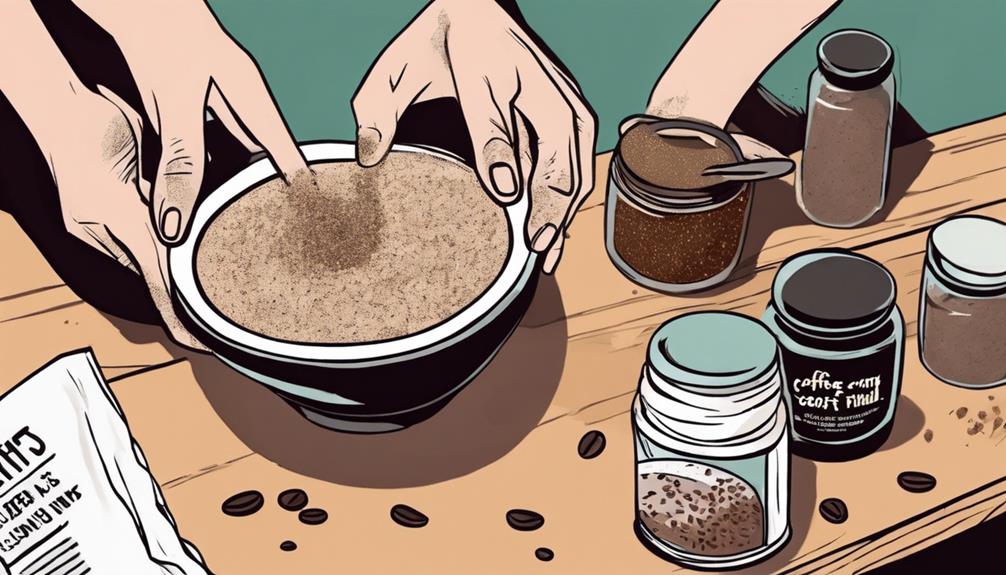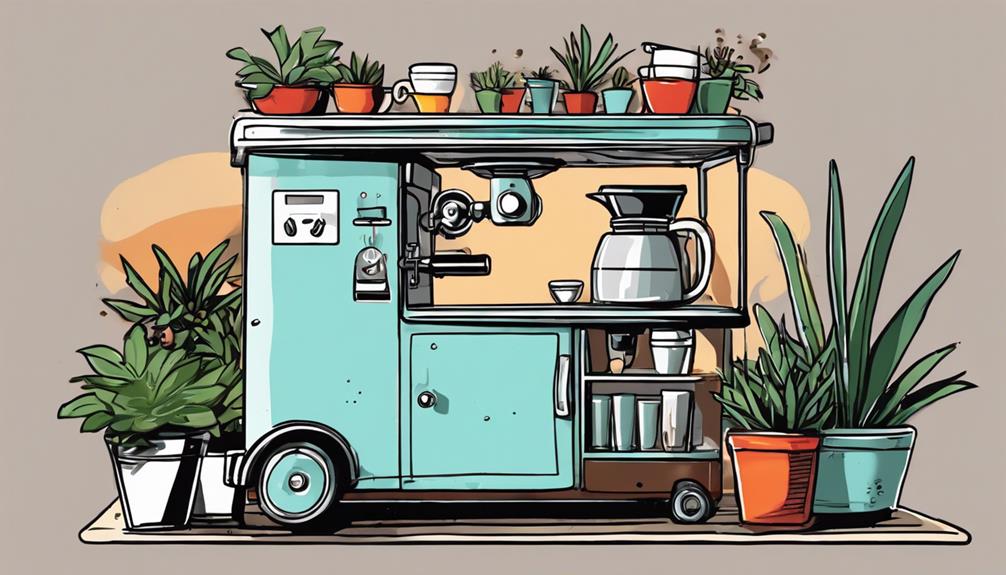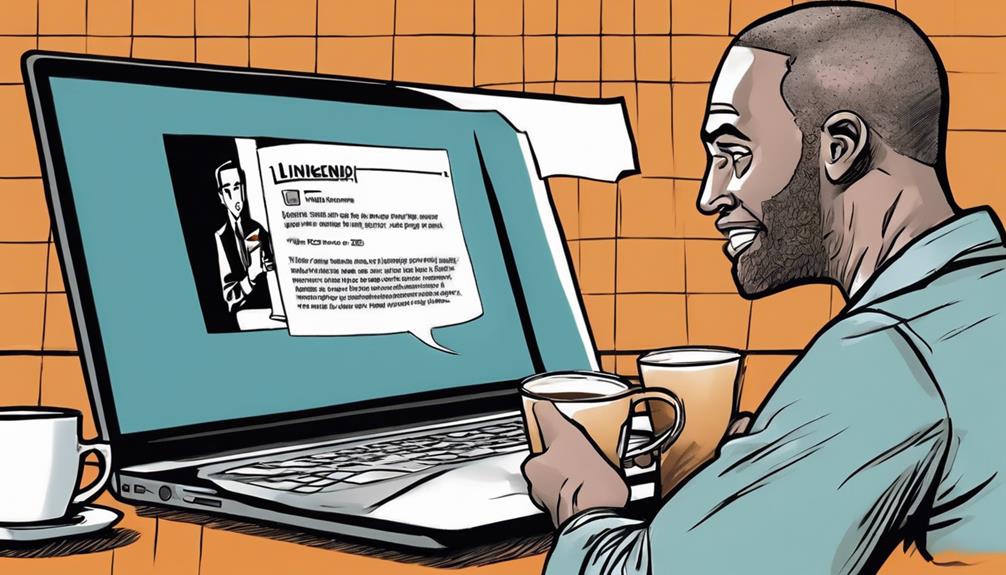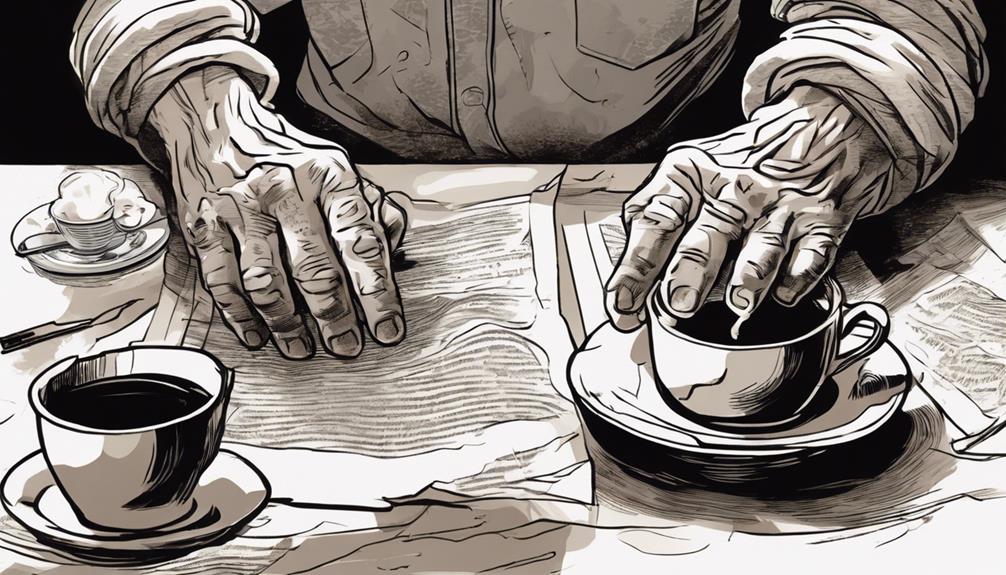Get irresistibly smooth and soft skin with the use of a coffee scrub. Begin by applying it on damp skin and gently massaging it in circular motions on rough areas like elbows and knees. Concentrate on exfoliating to reveal silky skin. Rinse off thoroughly after use. By perfecting the application technique, you will achieve the velvety feel you desire. For an enhanced experience, follow up with a moisturizer to seal in the softness. Furthermore, using a coffee scrub can also aid in brightening coffee stained teeth – simply combine the grounds with a small amount of coconut oil and gently brush onto your teeth for a few minutes before rinsing. By incorporating these simple steps into your skincare routine, you can indulge in a luxurious pampering experience from head to toe.
Key Takeaways
- Apply coffee scrub on damp skin in circular motions.
- Concentrate on rough areas like elbows and knees.
- Rinse off thoroughly in the shower or bath.
- Use 3-4 times a week for soft, silky skin.
- Consider adding jojoba oil for extra hydration.
Sugar Selection for Coffee Scrub
When selecting a sugar for your coffee scrub, consider the level of exfoliation needed for your skin type. Brown sugar is the gentlest option, perfect for sensitive skin due to its fine granules.
If you desire a bit more exfoliation, pure cane sugar provides versatility in scrub textures without being too harsh.
For those seeking a deeper exfoliation, turbinado sugar with its larger granules is the most abrasive choice.
The type of sugar used in your coffee scrub plays a significant role in determining the overall exfoliating effect and texture of the scrub. It's vital to customize your sugar selection based on your individual skin needs and preferences.
Experimenting with different sugars can help you find the perfect balance between achieving smooth, soft skin and avoiding irritation. Choose wisely to make sure your coffee scrub caters to your skin's unique requirements.
Oil Options for Body Scrub
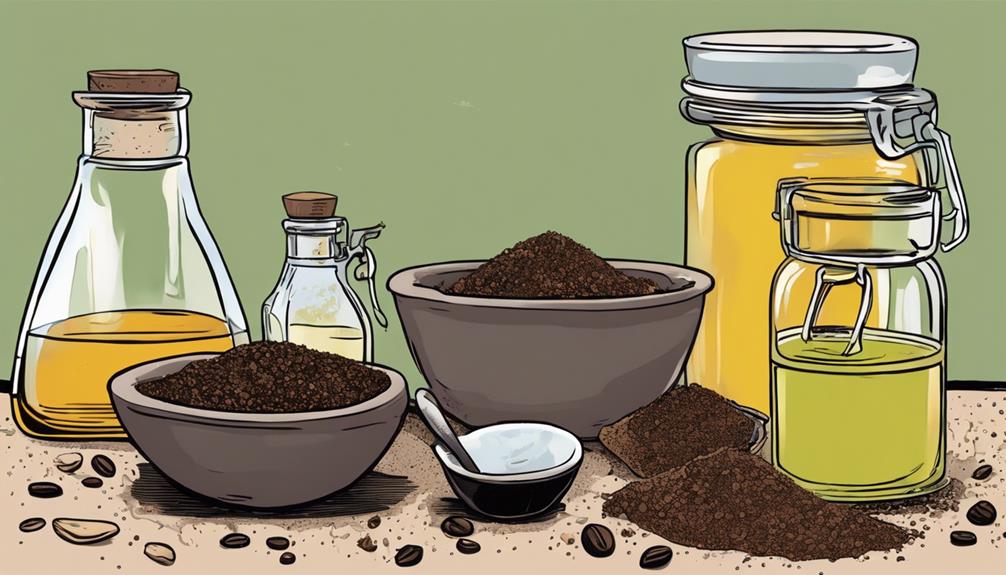
Consider exploring a variety of oil options when creating your body scrub to enhance its hydrating and nourishing properties. Popular choices like coconut oil, avocado oil, sweet almond oil, and olive oil offer unique benefits for softer skin.
Coconut oil is deeply moisturizing, avocado oil is rich in vitamins and antioxidants, sweet almond oil is gentle and lightweight, while olive oil is known for its nourishing properties.
Additionally, oils such as hazelnut, hemp seed, sesame, and apricot oil can provide specific benefits tailored to your skin's needs. These oils not only help maintain skin moisture but also aid in preventing dryness, making them essential components of your body scrub.
Mixing and matching different oils based on your preferences can create a personalized skincare experience that leaves your skin feeling smooth, supple, and rejuvenated. Add a few drops of vitamin E oil to your coffee sugar scrub for an extra boost of nourishment and hydration.
Applying Coffee Scrub for Skin
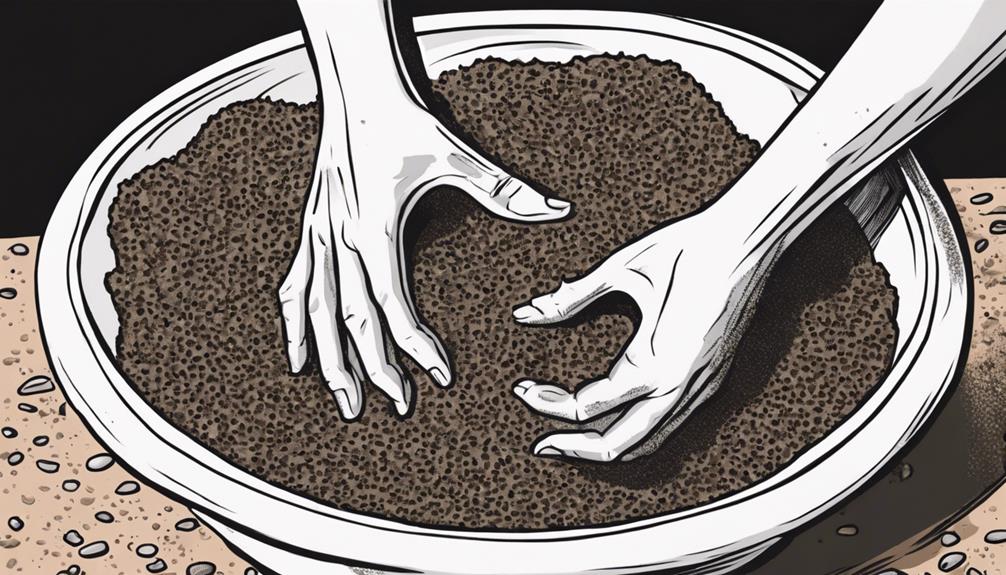
For best exfoliation, apply the coffee scrub in the shower or bath. To start, make certain your skin is damp. Take a handful of the coffee scrub and gently massage it onto your skin using circular motions. Pay extra attention to rough areas like elbows, knees, and heels to effectively slough off dead skin cells.
The coffee scrub works wonders in buffing away impurities and revealing smoother skin. While scrubbing, enjoy the invigorating scent and the stimulating feeling on your skin. Once you've covered all the desired areas, rinse off the scrub thoroughly to expose soft, silky skin.
Using the coffee scrub 3-4 times a week will help you maintain that luxurious smoothness. Make this part of your routine for a spa-like experience at home and to guarantee your skin stays radiant and healthy. Get ready to show off your beautiful, glowing skin after each coffee scrub session!
Storing Coffee Sugar Body Scrub
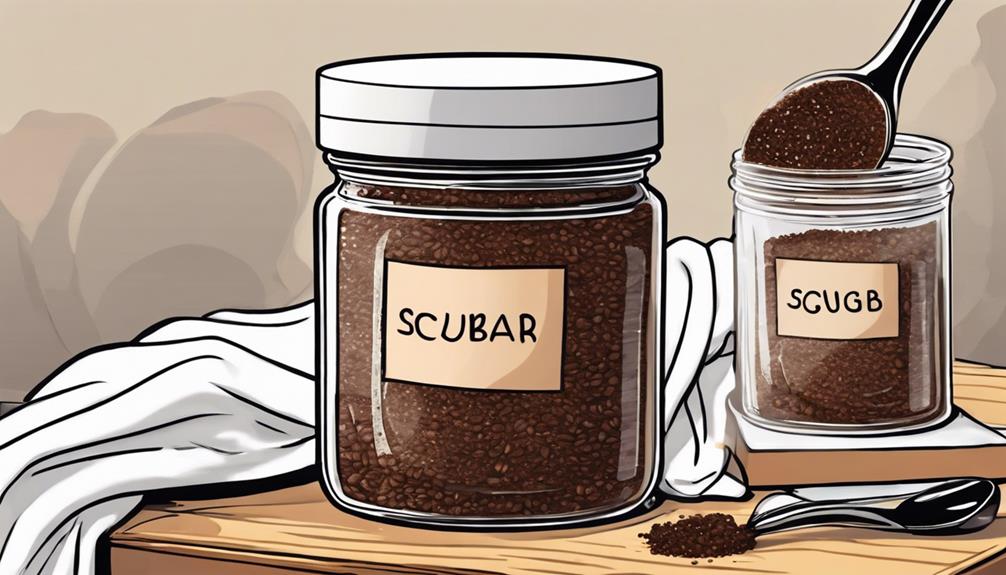
To maintain the freshness and effectiveness of your coffee sugar body scrub, store it in a sealable glass container like a mason jar. Proper storage is essential for preserving the scrub's quality and ensuring best results when you use it on your skin. Any container with a lid will suffice, but glass jars are preferred for preserving the scrub for up to a month, with the most favorable results achieved when used within three weeks.
Consider the following table for a quick reference on storing your coffee sugar body scrub effectively:
| Storage Tips for Coffee Sugar Body Scrub | ||
|---|---|---|
| Use a sealable glass container | Store in a dry place | Keep away from moisture |
| Maintain freshness | Use within 3 weeks | Ideal for 3-4 times a week |
DIY Coffee Scrub Benefits
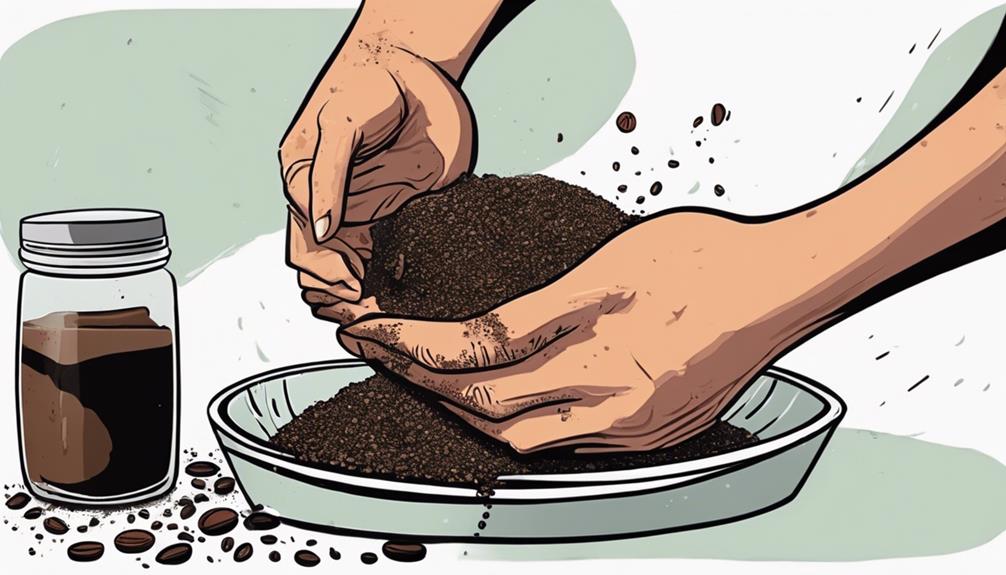
Reveal the numerous benefits of a DIY coffee scrub. It exfoliates skin, promotes regeneration, and boosts circulation while providing antioxidants and caffeine to enhance skin health.
When you opt for a natural DIY coffee scrub, you're choosing a powerhouse exfoliator that not only removes dead skin cells but also stimulates cell regeneration, leaving your skin looking fresh and rejuvenated.
The antioxidants present in the coffee scrub help combat free radicals, reducing sunspots and fine lines, giving your skin a youthful glow.
Additionally, the caffeine in the scrub can work wonders by reducing dark circles, improving blood circulation, and even helping to diminish cellulite.
By incorporating a DIY coffee scrub into your skincare routine, you're not only pampering yourself but also actively promoting healthier, smoother skin.
DIY Coffee Scrub Recipe Details
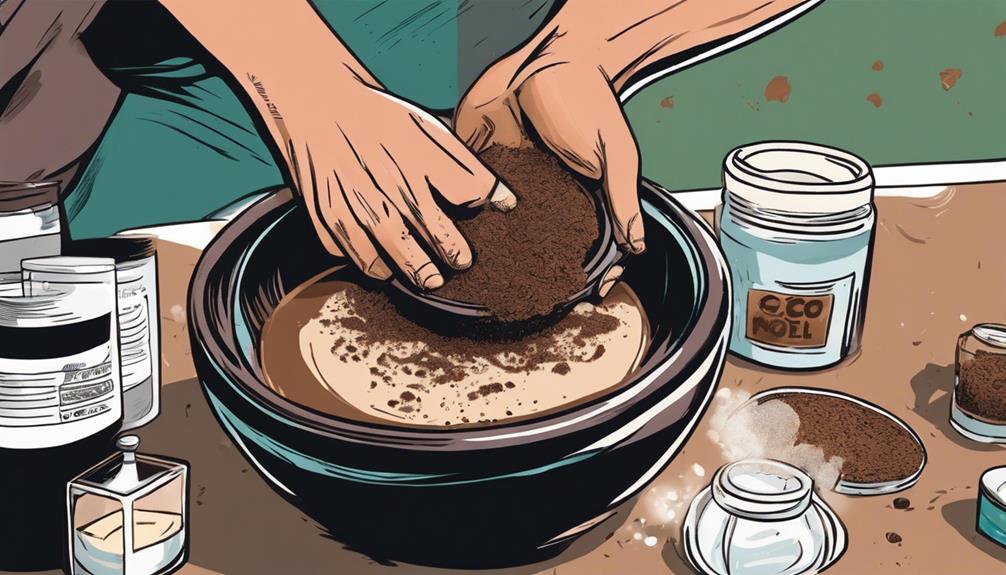
Mix 1 cup of coffee grounds, sugar, and your choice of oil to create a DIY coffee scrub that delivers effective exfoliation and hydration.
By blending these ingredients, you can achieve a potent scrub that helps in removing dead skin cells, revealing radiant skin underneath.
The coffee in the scrub not only exfoliates but also aids in firming the skin, reducing the appearance of cellulite, and safeguarding against free radicals that can harm your skin.
Once you've mixed the ingredients thoroughly, store the scrub in a glass container for easy use.
Regularly using the coffee scrub 2-3 times a week can notably improve your skin health and appearance.
This simple yet powerful recipe can be a game-changer in your skincare routine, providing multiple benefits that contribute to smoother, healthier-looking skin.
Tips for Using DIY Coffee Scrub

For best exfoliation, apply the DIY coffee scrub in the shower or bath. Gently massage a small amount of the scrub onto your face and body in circular motions. Using this scrub 3-4 times a week works best to maintain soft skin. After scrubbing, rinse off completely to reveal silky smooth and moisturized skin.
To enhance the benefits of your DIY coffee scrub, consider adding a few drops of jojoba oil to the mixture. Jojoba oil is known for its moisturizing properties and can leave your skin feeling extra soft and hydrated.
| Tips for Using DIY Coffee Scrub | ||
|---|---|---|
| 1. Apply in the shower or bath | 2. Use 3-4 times a week | 3. Gently massage onto face and body |
| 4. Rinse off completely | 5. Consider adding jojoba oil |
Frequently Asked Questions
Do You Use Coffee Scrub on Wet or Dry Skin?
You should use a coffee scrub on wet skin for best results. Wet skin helps the scrub spread easily and prevents abrasiveness. It allows the scrub to glide smoothly, exfoliate effectively, and leave your skin feeling soft and supple.
How to Apply Coffee Scrub on Face?
To apply a coffee scrub on your face, gently massage in circular motions for exfoliation. Avoid the eye area and focus on dry spots. Rinse with lukewarm water for smooth skin. Embrace the coffee goodness for silky results!
How Long to Leave a Coffee Scrub on Your Face?
Leave a coffee scrub on your face for 5-10 minutes, ensuring the ingredients work effectively. Avoid irritation by not exceeding the recommended time. For sensitive skin, start with shorter durations and gradually increase. Rinse with lukewarm water for smooth skin.
How Do You Make a Creamy Coffee Scrub?
To make a creamy coffee scrub, you mix coffee grounds, sugar, and coconut oil. The coffee grounds exfoliate gently, sugar removes dead skin cells, and coconut oil hydrates. Spread on skin, scrub in circular motions, rinse off. Enjoy silky skin!
Conclusion
To sum up, incorporating a coffee scrub into your skincare routine can leave your skin feeling smooth, soft, and silky. By selecting the right sugar and oil, applying the scrub properly, and storing it correctly, you can reap the benefits of this DIY treatment. Remember to gently massage the scrub in circular motions for best results.
Try this simple and effective coffee scrub recipe today for radiant and rejuvenated skin!
